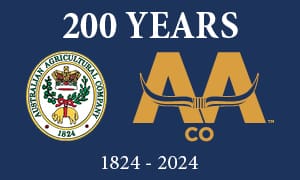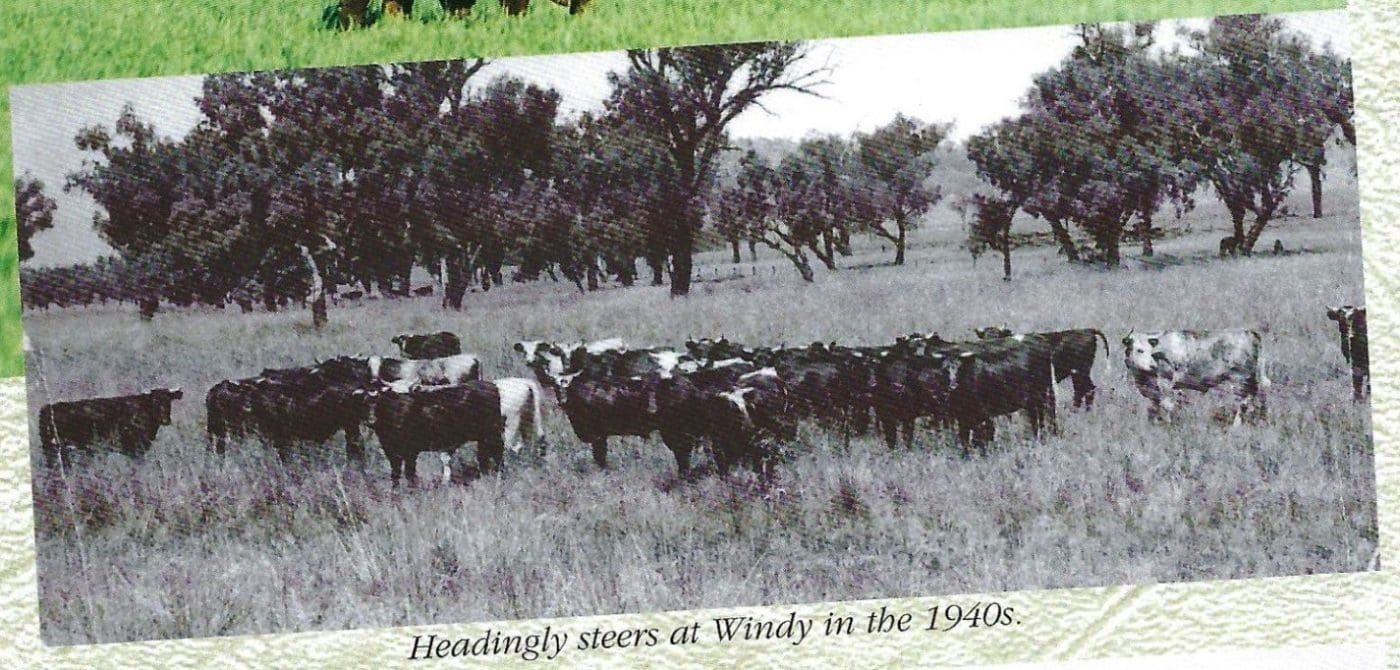 As part of the Australian Agricultural Co’s 200th anniversary this year, Beef Central is publishing a series of articles documenting features of the company’s eventful and often colourful history.
As part of the Australian Agricultural Co’s 200th anniversary this year, Beef Central is publishing a series of articles documenting features of the company’s eventful and often colourful history.
The first of these will dig into the history of the world’s largest cattle producer’s beef genetics. In a four part series starting today and continuing in coming months, we’ll chronicle AA Co’s progression through the Shorthorn, Santa Gertrudis, Composite and Wagyu eras.
The Shorthorn genetics era
While the Australian Agricultural Co today is almost entirely aligned with beef production, it wasn’t always that way.
In its formative years after the company’s foundation in 1824, coal (and to a lesser extent gold) mining was the primary focus, with livestock, and especially beef, playing only a subsidiary role.
As the company grew, wool was the major livestock focus for its first 130 years, and it wasn’t until around World War Two that beef really became a much more significant part of the company’s business focus.
Having said that, there’s clear historical evidence of some appetite for beef production from the company’s earliest days.
One of best accounts of the history of AA Co’s early progress can be found in Demaris Bairstow’s definitive history, “A Million Pounds, A Million Acres.”
The following is an extract from New South Wales: Its resources and business possibilities, edited by J.H. Nancarrow, 1925:
“The Australian Agricultural Co was incorporated in London in 1824 following negotiations with the British Government for a grant of 1,000,000 acres of land in NSW on the condition that certain sums of money should be expended in the development and improvement of the land so granted.”
Other early reports refer to “the company’s purpose of developing the wastelands of NSW.”
AA Co marked the first substantial inflow of private British capital into the new colony of Australia, hence it made sense that British-based beef genetics were employed from the outset.
The million pounds in capital raised by foundation shareholders entitled the company to a grant of one million acres, initially located north of Port Stephens, where coal deposits had been found. It was ‘virtually an independent colony’ within the colony of NSW at the time.
The vast age of the company is underlined by a record of personnel numbers from 1828, listing 270 convicts working among 600 total staff across the company’s mining and agricultural pursuits.
Beef cattle, however, was not the company’s initial focus, with wool, horses, mules, wheat and even crops like tobacco taking precedence in early records. A record of stock numbers showed the company had just 12 head of cattle on its books in 1825, the year after its formation, but that number quickly grew to 2803 head by 1834.

Enter the Durham Shorthorn
The earliest historical company records referencing breed type were to Durham Shorthorns and ‘Scotch’ cattle (presumably Aberdeen Angus), both already well established in the new Australian colony.
However It was the Durham Shorthorn that provided the real genetic foundation for AA Co’s cattle enterprise that would unfold over the next 150 years (see photo above of Headingly-bred Shorthorn steers on Windy Station in the 1940s).
“The Durham Shorthorns – equally suitable for beef or dairy production and for breeding working oxen, could not have been bettered. The Angus cattle were not retained, but AA Co was still famous for its Durhams 100 years after they were first imported,” Bairstow wrote.
AA Co imported its own purebred Durham cattle from England, but in 1826 also bought large numbers of locally bred ‘colonial’ cattle (of undetermined breed origin), as the foundation of its beef herd, records show.
Three ‘cattle stations’ were set up on the original Port Stephens coal mining estate, north of modern-day Newcastle. All had proved unsuitable for sheep.
“The cattle ran wild, and no muster was possible,” Bairstow wrote. “Eight fencers were employed in 1828, erecting about 15 miles of post-and-rail enclosures to try to establish some control.”
By 1829, many of the company’s cattle had been moved inland, to better established pastures at the Peel River Estate (Goonoo Goonoo), between present day Tamworth and Nundle, and later the Warrah Estate further west.
In 1831, the first shipment of bullock hides was sent to England, followed later by salt beef.
“By the 1860s, the company began to reap its reward from Durham cattle breeding, as new demand for livestock arose as cattle farming spread into western and northern Queensland,” Bairstow wrote. This presumably refers to the sale of breeding cattle to stock the emerging cattle ventures in the north.
Soldier settler resumptions
The demise of AA Co’s original Port Stephens Estate landholding used for coal, and the compulsory Soldier Settler land resumptions after World War One impacted both AA Co’s Warrah and Peel River stations near Tamworth, forcing the company to consider moving to more remote areas, Bairstow wrote. Large tracts of leasehold land were available in Queensland and the Northern Territory, and AA Co started to re-orient north.
Two of the oldest northern land assets remaining in company hands today are Avon Downs on the Barkly Tableland, which celebrated its 100th year of company ownership in 2022 (see Beef Central’s earlier report), and Headingly Station near Camooweal, bought six years earlier in 1916. Both ran Shorthorn cattle and sheep in the earliest years of company ownership.
Some northern Australian stations were purchased prior to Headingly, but all were sold over the years. Most were used for sheep, rather than cattle. Examples included Corona, near Longreach, purchased in 1912, followed by Bladensberg and Highfields near Winton purchased during drought in 1915.
Shift from sheep to cattle
As the AA Co herds and flocks shifted north, it gradually became apparent that the new lands were better suited to cattle than sheep, and AA Co adapted accordingly, Bairstow wrote.
South Galway, south of Windorah, became AA Co’s first Channel Country investment, in 1948. Brunette Downs came much later, bought from King Ranch in 1979 (more on Brunette in the next instalment in this series, on Santa Gertrudis).
Brunette, together with Mt House and Glenroy in the Kimberley, were bought for the princely sum of $5 million. The latter two were sold a year or two later for $1.5m, valuing Brunette at the time at around $3.5m.
By the end of 1979, AA Co gross profits from cattle production rose to close to $16m, almost treble the previous year, largely due to the significant rise in cattle prices following the end of the 1974-78 beef slump, and the big increase in turnoff numbers following the Brunette Downs purchase.
Beef focus
From around this time, the company’s sheep production and grain production declined sharply, with northern beef becoming the main focus. The original Goonoo Goonoo property near Tamworth was sold in 1985, and large grain-growing assets like Tullin Tulla north of Moree a few years later.
By the time Trevor Schmidt retired as AA Co managing director in 1988, there were only 18,000 sheep left on AA Co’s books, and beef was the company’s overwhelming focus.
By the end of the 1990s, AA Co controlled some 6.5 million hectares (16 million acres) across northern Australia, almost entirely used for beef production.
As the company continued to expand into northern Australia in the 1970s-80s, it became increasingly apparent that British cattle breeds were susceptible to ticks and tick fever in the harsher northern climate, Bairstow wrote in A Million Pounds, A Million Acres.
This prompted the second phase in the company’s genetics history – the Santa Gertrudis/Brahman era – coming up next in this series …….
